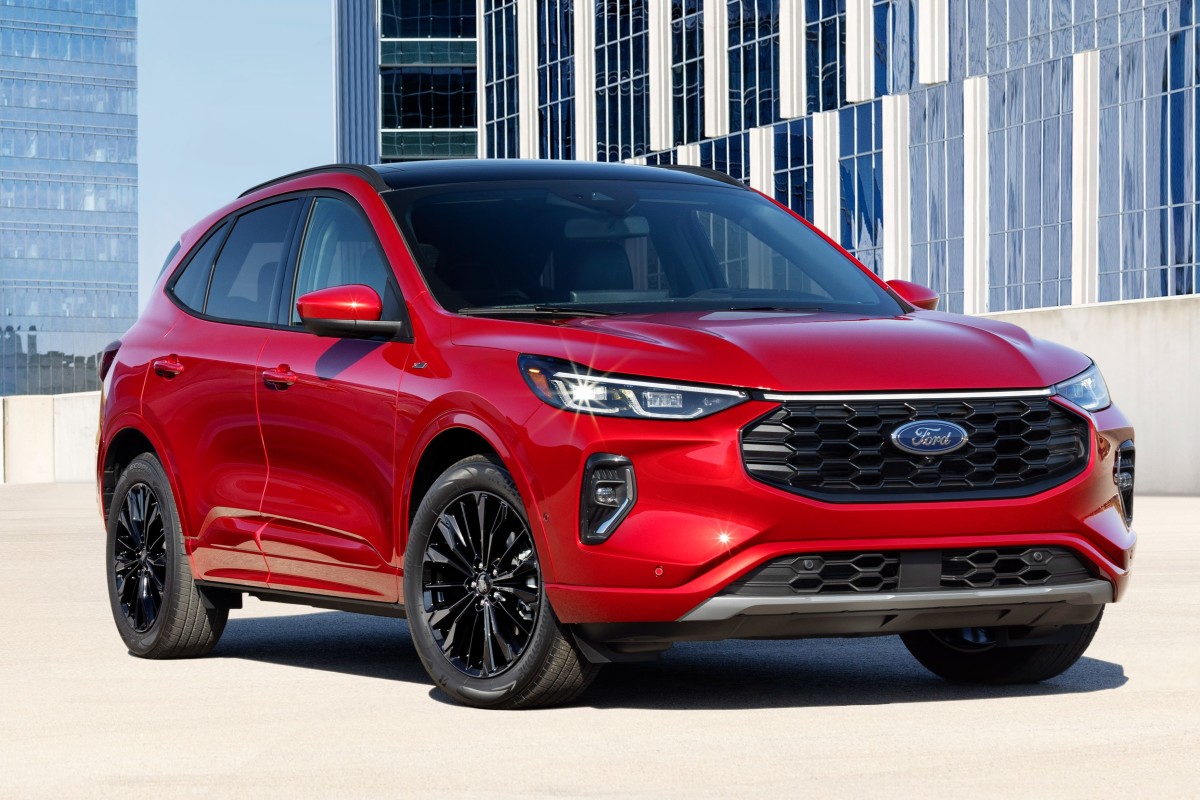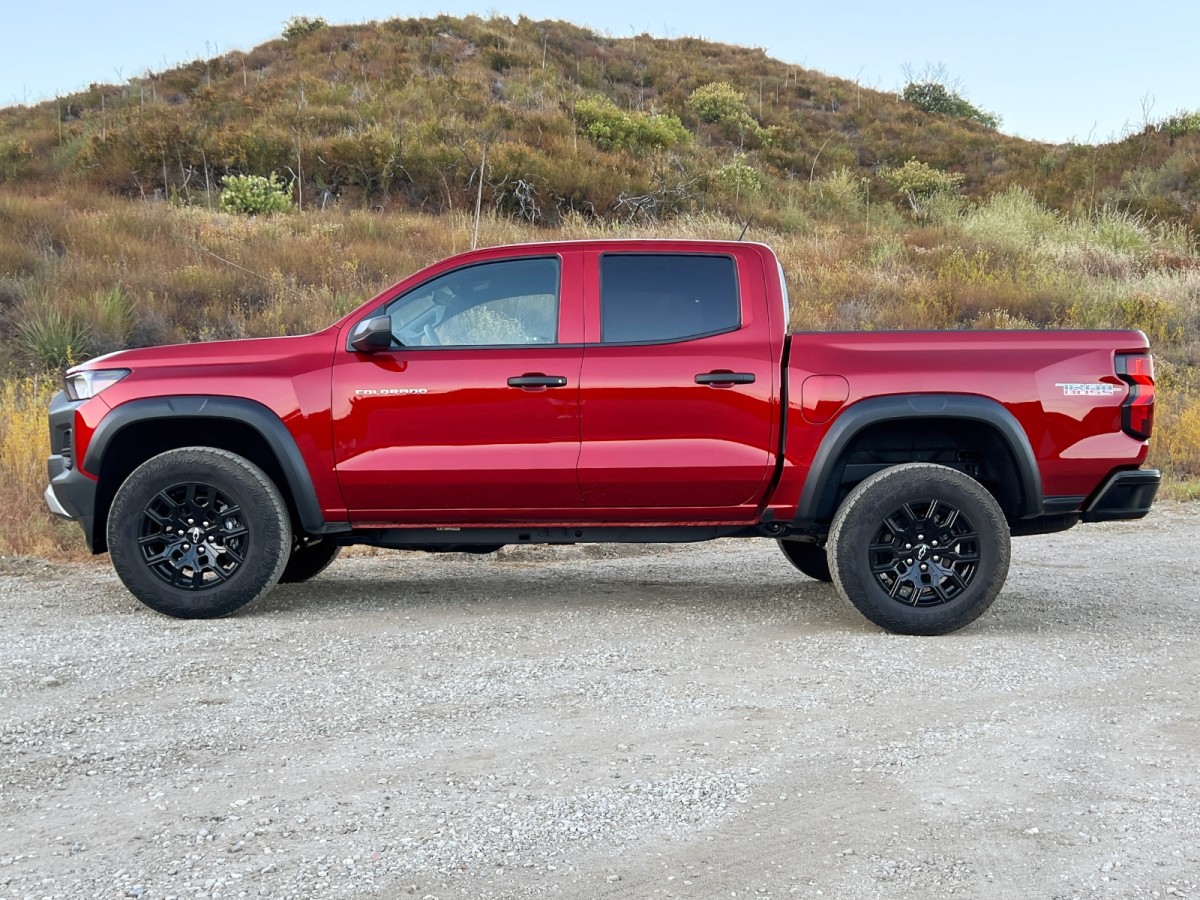Whether gas is $5 per gallon or $2 per gallon, there’s no reason to waste any of it with all of the advanced technology at our disposal. Auto stop-start, cylinder deactivation, fuel injection, and electronic ignition all work together to provide a measurable increase in fuel efficiency.
But what about cruise control? It’s always been considered a convenience item, saving your right foot from a life of pedal-pressing drudgery on the highway, but is better fuel economy one of the benefits of cruise control?
Cruise control—particularly adaptive cruise control—can help you save fuel. However, it's not an open-and-shut case. Before we get into how cruise control can contribute to efficient driving, let’s get an understanding of what this function is, and where it came from.
How Did Early Cruise Control Work?
You could make an argument that tractors had cruise control much earlier than cars did. Even the earliest gasoline-powered tractors had a hand throttle that allowed a farmer to set a constant speed while he was otherwise occupied looking over his shoulder at his cultivator.
The earliest cars from the turn of the 20th century had hand throttles, too. A lever mounted to the steering column allowed drivers to set a speed and stick to it. But a hand throttle isn’t really cruise control, since it doesn’t adapt itself to changing loads. If you set a hand throttle and suddenly you’re faced with a steep grade, you’re not going to be able to maintain that set speed. And if the grade is steep enough, the engine will eventually stall.
Early cruise control used a device called a “flyball governor,” which used centrifugal force to spin two balls mounted to a shaft, connected in turn to the throttle valve. As load increased, the balls spun and raised a sliding ring that caused the throttle to open. That allowed a vehicle to maintain a steady speed, even when climbing inclines.
During World War II, when gas was rationed and the national speed limit dropped to 35, there was a flurry of activity from inventors looking to maintain a constant speed automatically.
What Was the First Car with Cruise Control?
Ralph Teetor received a patent in 1950 for a speed control device called “Speedostat.” Chrysler would introduce it—under its own “Auto Pilot” brand name—on the Imperial in 1958, making the Imperial the first mass-produced car with what we now consider to be “cruise control.” Speedostat used a bi-directional screw-drive with an electric motor connected to both the throttle and the speedometer cable coming off of the transmission. With a cable, the driver could set a desired speed, and the car would maintain that constant speed, regardless of hills.
GM utilized exactly this technology for years. The automaker contributed a turn signal stalk-mounted switch with a pushbutton to set the speed, but the feature was fundamentally Speedostat cruise control for decades. Other cruise control systems used vacuum-operated throttle servos to adjust the throttle position.
How Does Electronic Cruise Control Work?

The cruise control on any new car, since the 1980s or so, also sets the desired speed and maintains it regardless of hills, but the often-unreliable vacuum servos have been replaced by electronics. Motorola developed an Automotive Speed Control Processor that can be integrated with the engine management system, using speed sensors at the wheels, transmission, and engine to accurately maintain a constant speed.
What is Adaptive Cruise Control?

The most recent development was adaptive cruise control, which steps over the boundary into the first level of autonomous driving. Adaptive cruise control maintains speed in the same way that any other cruise control does, but it uses cameras, sonar, lasers or other devices to monitor the distance and closing speed of the vehicle immediately in front. If the road is clear, adaptive cruise control will maintain a desired speed. If a car in front is traveling slower, the system will slow to match the speed of the car in front, keeping a preset safe distance between the two cars.
In some vehicles, adaptive cruise control can follow the leading vehicle’s speed all the way down to a full stop, applying the brakes and holding the stop for 10 seconds or so until the vehicle in front begins to move again or the system disables itself with an audible and visual warning.
So Does Cruise Control Save Gas?

You’ll hear plenty of urban myths and opinions based on anecdotal evidence, but we want actual data. Volvo and the National Renewable Energy Laboratory in Golden, Colorado, performed a study of 18,500 trips in daily traffic in Gothenburg, Sweden, which compared the fuel efficiency of vehicles with adaptive cruise control to that of vehicles whose drivers regulated their speed manually. The study—published in IEEE Intelligent Transportation Systems Magazine in June of 2019—showed that consistent use of adaptive cruise control resulted in a 5 to 7 percent increase in gas mileage versus human throttle management.
That said, one of the most effective ways of using less fuel is to drive at your car’s optimal speed for fuel savings. That will differ from vehicle to vehicle, depending largely on the size of the engine, the aerodynamics, the top transmission gear ratio, and the final drive ratio. But in general, every 5 mph increase over 50 mph will result in a fuel consumption penalty. It just so happens that cars with adaptive cruise control typically drive at slower average speeds, because they follow cars in front that may be traveling slower.
Regardless, the study does show that adaptive cruise control can help increase your overall gas mileage.
When Should You Not Use Cruise Control?

There are times when cruise control, adaptive or otherwise, is ineffective, and it can actually be dangerous in some circumstances.
Cruise control is most effective when you’re traveling at highway speed. It’s not effective at all when you’re in stop-and-go traffic, and using it on back roads to maintain 35 mph isn’t particularly useful or desirable, either.
Drivers should avoid cruise control entirely in bad weather, including rain, sleet, and snow, but the reasoning for this is often muddy. A Google search will result in a whole lot of uninformed opinion based on flimsy understanding of how cruise control actually works in a modern vehicle.
It’s less of an issue in a vehicle with adaptive cruise control, because most of the systems involved just won’t work in bad weather. They currently require a clear line of sight to the road in front. Lasers and cameras are foiled by driving rain, road spray, and snow just the way your own eyes are, and these systems will automatically disable themselves in these conditions.
But even if you’re driving a vehicle with non-adaptive cruise control, it’s wise to keep it disengaged during bad weather. This may not matter so much if your vehicle is relatively new, but if you’re driving an older vehicle, one that was produced before traction control was a mandatory feature, using cruise control in the rain can absolutely be a problem.
Modern vehicles use wheel speed sensors and the engine management system to calculate the difference between wheel speed and vehicle speed. If it senses that the wheels are spinning faster than the vehicle is moving, the traction control system will cut the throttle until the wheels stop spinning, and when the throttle input is cut, the cruise control turns off.
However, that’s not the case in vehicles that don’t have traction control, which includes most produced before it became mandatory in 2011. In those vehicles, the cruise control simply delivers more throttle when the wheels spin, resulting in a bad outcome for all involved.
What Are Some Other Ways To Improve Fuel Economy?
Aside from using cruise control when it’s safe to do so and generally maintaining the speed limit, there are many other technologies at work that help to save fuel. Although polarizing among drivers, automatic stop-start functions definitely save fuel, by eliminating the waste of idling at traffic lights. AAA tested the feature and determined that it resulted in a 5 to 7 percent increase in fuel economy.
Air conditioning is great on the days when it’s brutally hot, but, according to the EPA, it can reduce your fuel economy by more than 25 percent. The agency suggests resisting the urge to turn a/c on immediately, and instead driving for a bit with the windows open to let the hottest air out of the car first. It also recommends pre-cooling the interior on electric cars and plug-in hybrids before driving. That’s a feature most EVs (electric vehicles) offer via the mobile device app.
Tire pressure is also a fuel economy killer. According to the Department of Energy, running around with all four tires at 50 percent of their recommended pressure (who does that?) results in a 10 percent fuel economy penalty under 40 mph, which is the range in which a vehicle typically turns in its worst fuel economy anyway.
An automatic transmission used to represent a gas mileage penalty, but that’s not the case any longer. If anything, an automatic is a wash, and in most cases, an automatic will provide better fuel economy than its manual counterpart (if if it’s even available) will. With the same 2.0-liter engine, the 2022 Honda Civic with a six-speed manual suffers a 3-mpg combined penalty versus the continuously variable transmission (CVT).
Finally, driving sensibly can have a dramatic effect on fuel economy. If you’re the type of driver who skids to a stop at every red light and then mashes the gas pedal to the floor mat when it turns green, your fuel economy can be up to 33 percent worse than what somebody who doesn’t drive that way will get. Mending your ways will save money even in times of low gas prices, as it will cut your spending on insurance rates and speeding tickets, too.



